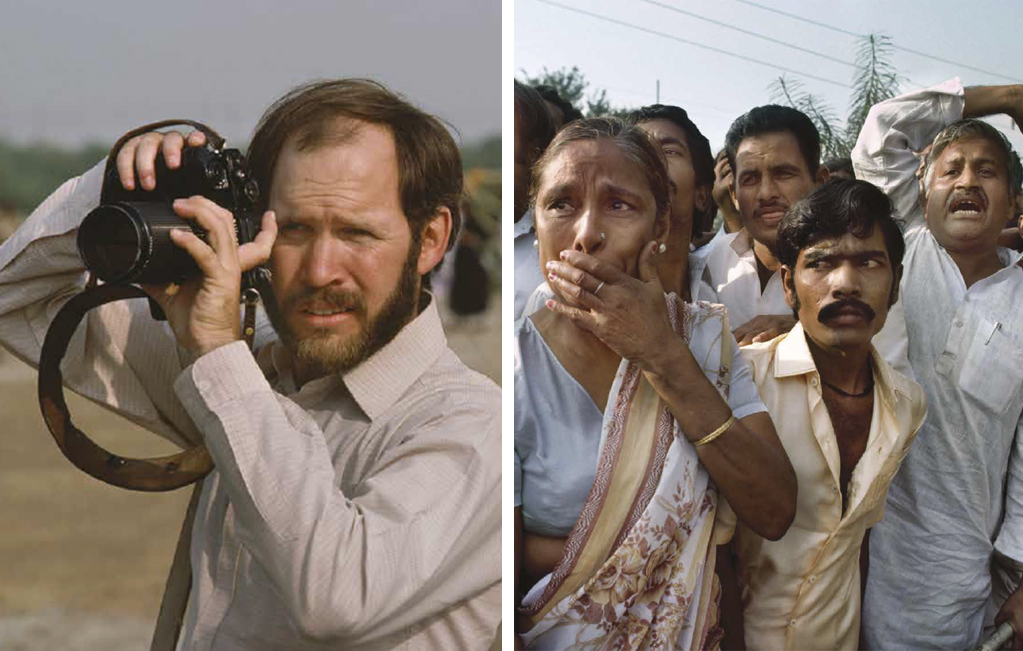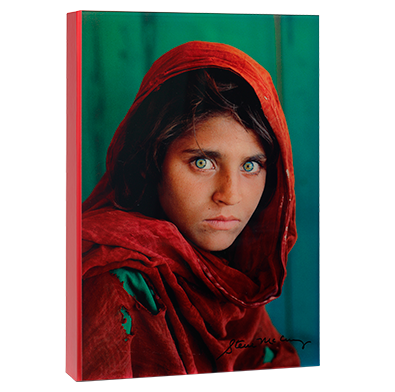Steve McCurry: a life behind the camera
‘Capturing the Soul’ by Steve McCurry is an exclusive edition that offers the opportunity to get a closer look at the photographer of The Afghan Girl, through a spectacular collection of snapshots commented by McCurry himself. Additionally, his sister, Bonnie McCurry, has also contributed to this artist’s book. This testimony has been taken as the guiding thread to create this author profile.
In 1980, after nearly two decades of traveling the world, Bonnie McCurry received a call from her brother. The words “Hi, Bon, it’s Steve” were followed by multiple attempts to reconnect between Philadelphia and some remote place in South Asia. The contacts, being so rare and few, were of immeasurable value. Bonnie did not give in to worry, and finally, the other end of the line responded. The danger Steve McCurry faced daily was no secret to his sister, but neither was his survival instinct.
Photography as a universal language
“Steve’s photos tell stories and communicate truths about the human condition that challenge conventional vocabulary,” that is how Bonnie describes her brother’s work.
The emotional response to McCurry’s snapshots is a testament that breaks down geographical and cultural barriers. His approach, always persistent, always observant, allows him to open up to an unknown world, capture it, and reveal it to refute its coldness. Through his photographs, he creates an opportunity for connection—a common space where we can laugh, cry, or get lost in the myriad paths of the human mind, only to discover, perhaps for the very first time, that life must be celebrated.

Left: Steve McCurry in Nepal. 1983.
Right: Banana leaf serves as an umbrella for Boy herding water buffalo in Kathmandu. Nepal, 1984.
Carpe Diem according to McCurry: capturing the moment in every photograph
‘Perpetual Motion’ and ‘Steamroller Steve’ are his childhood nicknames. Ever since he was a kid, McCurry displayed a peculiar yet endearing obsession with speed, and so he ran. He ran as if he were about to miss the train—he could not fathom the idea of missing the moments in his life or the lives of those around him.
When things run away, you chase them, and then mourn them. But when they’re just moving quickly, you capture them. And because the photographer chose to see things from the latter perspective, now the essence of his work lies in “giving dignity to sadness, pain, and suffering.” His goal is not to humiliate or turn people’s lives into a spectacle but to pause the film of their lives to understand and admire them in both their splendor and rawness.

Left: Steve McCurry during the floods from the monsoon in Porbandar. India, 1983.
Right: Tailor in monsoon floods in Porbandar. India, 1983.
Beyond the author: portraits with their own DNA
McCurry’s portraits resonate deeply due to their authenticity and spontaneity, as one cannot help but let their guard down in the sight of the individuals in his images, captured in a state that blends vulnerability and trust.
What does each snapshot hide? Long journeys, downpours and storms, danger, and effort. These life situations are the ones that reward one with new connections and stories to tell back at home.
His portraits travel by word of mouth, resonating through streets and museums, not just because they bear the artist’s name. Each image carries a unique and untransferable identity that goes beyond the photographer’s technique or his attitude towards the world. Somehow, the line between reality and its reproduction blurs, as if McCurry steps on it every time he takes a picture.

Left: Steve McCurry at the funeral of Indira Gandhi. India, 1984
Right: Steve McCurry. People mourning at the funeral of Indira Gandhi. India, 1984
A good photographer’s catalog
McCurry offers his own definition of a good photographer.
First, the need for creation must be well established. In Capturing the Soul, Bonnie reveals these exact words from McCurry: “I don’t photograph for you, I don’t photograph for somebody else. I do it for me, because I have to live with myself.” It’s not about selfishness, but about being true to the reality being portrayed. The authenticity that so characterizes McCurry’s work would not be possible without the decision to abstain from catering to others’ tastes or expectations.

Left: Steve McCurry in Los Angeles, California. 1992.
Right: A coal miner, dark with the dust from the mine, smoking a cigarette in Pol-e-Khomri. Afghanistan, 2002.
Second, one must be curious and open to the unknown, always with sensitivity and passion for the profession. Not doing so means cutting short on great meanings, missing that symbolic train. It’s indisputable because such attitudes are immortal—they’re all you have left when motivation and energy expire or disappear for a while.
Third and foremost, a good photographer must be a good storyteller. In addition to being curious, one must create works that arouse curiosity. Every good story has a point of intrigue that manages to hold the reader, listener, or viewer until the end. Processing an image takes only a second, but the story behind it stays with you for a lifetime. In fact, we know from Bonnie McCurry that to The Afghan Girl’s author, the story precedes matters of light, composition, or harmony.
‘Capturing the Soul’ by Steve McCurry
– Limited and numbered edition of 2,998 copies, signed by the artist.
– The piece consists of two volumes and a case that pays homage to The Afghan Girl, McCurry’s most famous and recognized photograph
– The Art Book features 40 original photographs, reproduced in the highest quality and commented on by the author himself.
– The Study Book explores the life and work of the photographer through the eyes of his sister, Bonnie McCurry, president of the Steve McCurry Studios and director of the charitable educational center ImagineAsia, and journalist Antoni Ortí.

